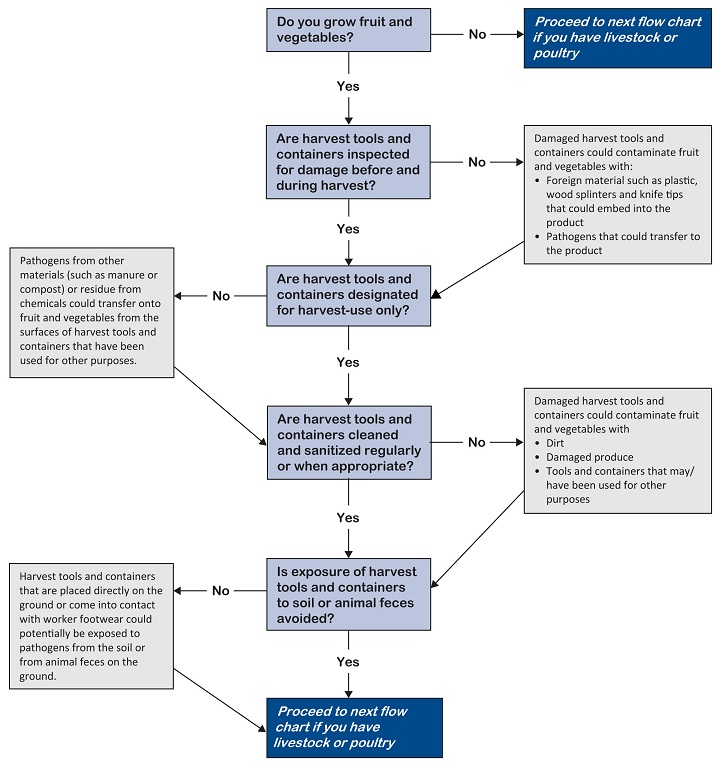Crops - 8.4 Harvest tools and containers
If not properly cleaned or maintained, harvest tools and containers can create potential hazards for the harvested product. This good production practice applies to all farms that produce fresh fruits, honey, nuts, and vegetables.

What needs to be done
Clean, disinfect where necessary and maintain harvest tools and containers at intervals that limit contamination of harvested product.
How to do it
Before harvest
Never use harvest containers for storage of waste, chemicals or other dangerous materials.
Examine the condition of harvest tools, containers, crates and pallets at the start of the season and occasionally during the season. Discard them if they cannot be appropriately cleaned or repaired.
Where packing containers are stored outside, examine them for debris, and clean and sanitize them before use.
During harvest
When packing in the field, avoid contaminating containers or bins by exposure to soil or animal droppings. Keep packing boxes and bins off the soil by placing them on a dummy pallet or a tarp.
Do not allow employees harvesting fresh fruit or vegetables to stand in bins. Shoes can transfer contaminates to the container and to the harvested product.
When packing indoors, remove as much dirt and mud as practical from produce outside of packing areas before bringing the product into a clean area.
In general
Keep equipment or machinery that comes in contact with fresh produce as clean as practical. This includes all sorting, grading and packing equipment. Dirty equipment that comes into contact with produce can transfer contaminants to the produce.
Develop a cleaning program and schedule.
Clean equipment such as knives, boots, gloves and aprons; sanitize them where appropriate, inspect them regularly, and replace them when needed.
In harvest or packing areas:
- Do not use tools or equipment that has been used in manure or composting areas unless they have been thoroughly cleaned and sanitized.
- Do not use tools or equipment that have been used for chemicals or lubricants
If you have an audit
Be prepared for the auditor to:
- Observe harvest tools and containers to make sure they are well maintained and clean
- Review sanitation records
Samples and records
